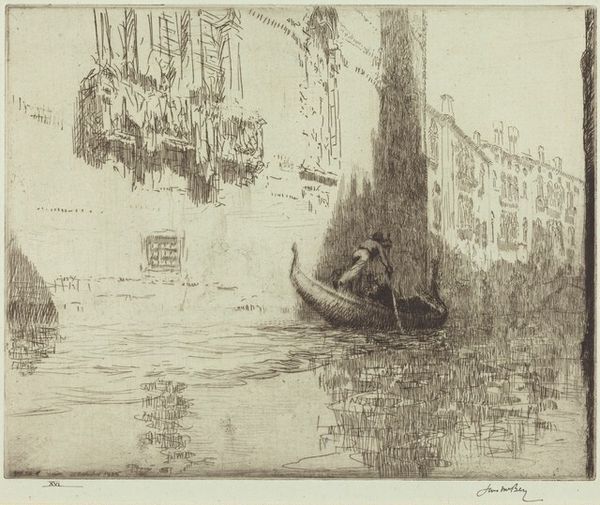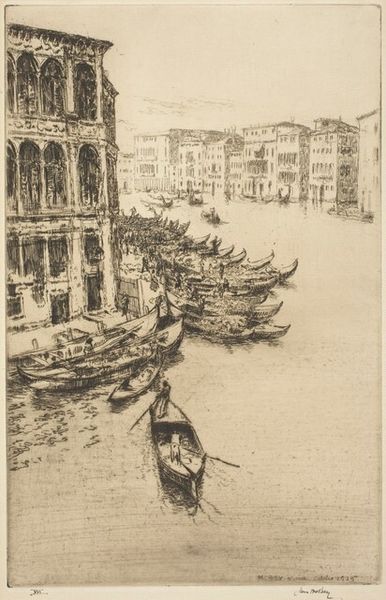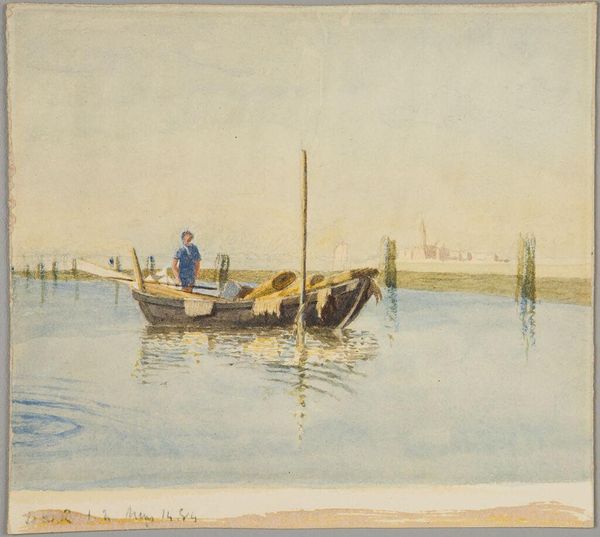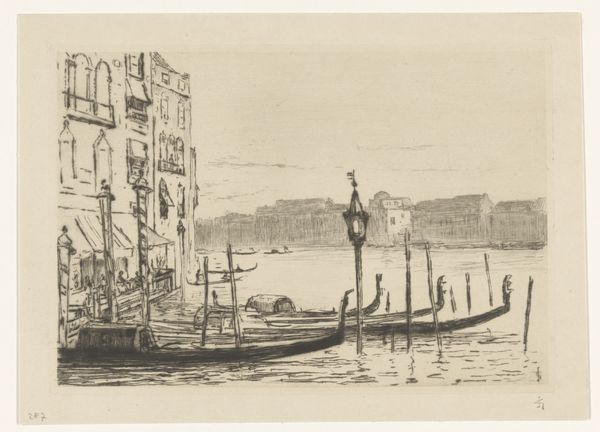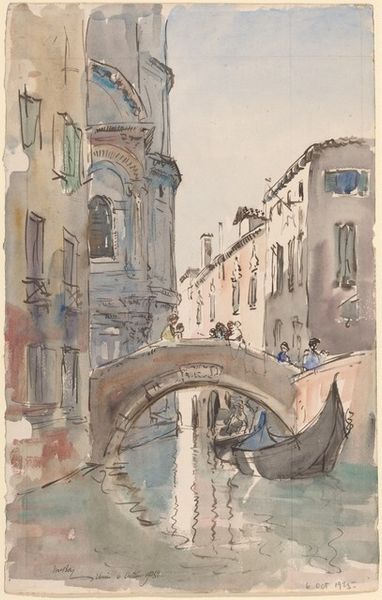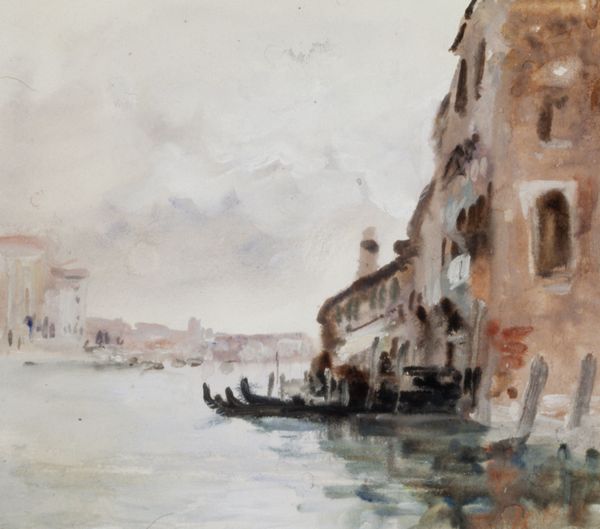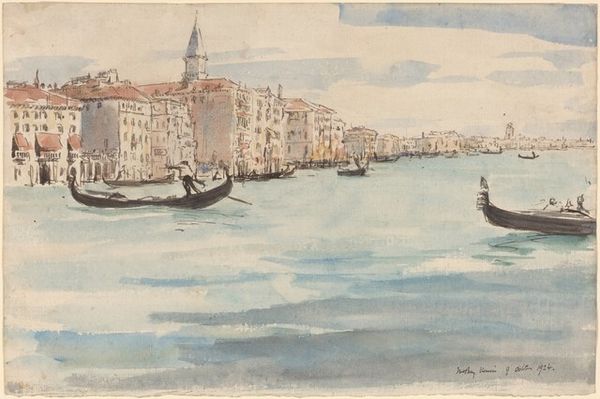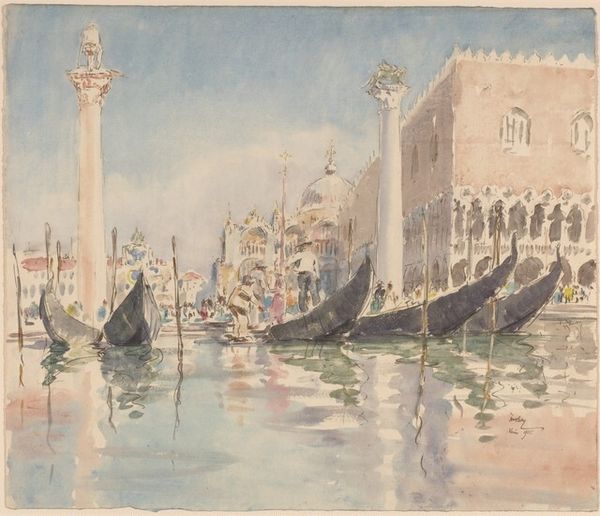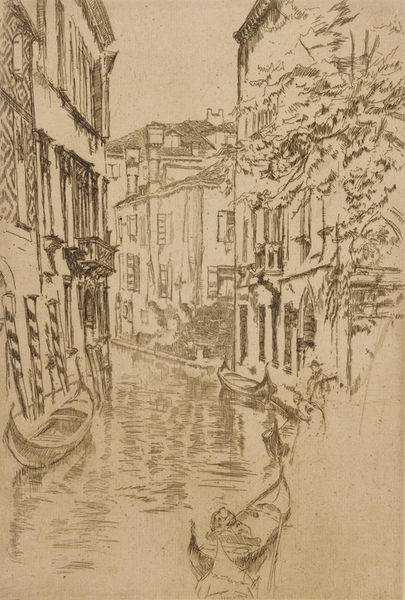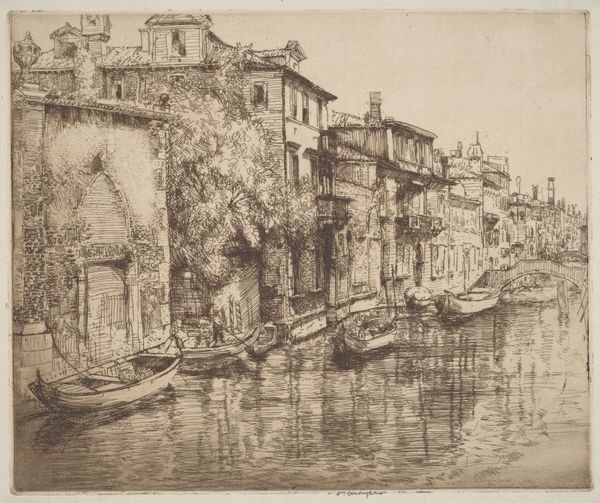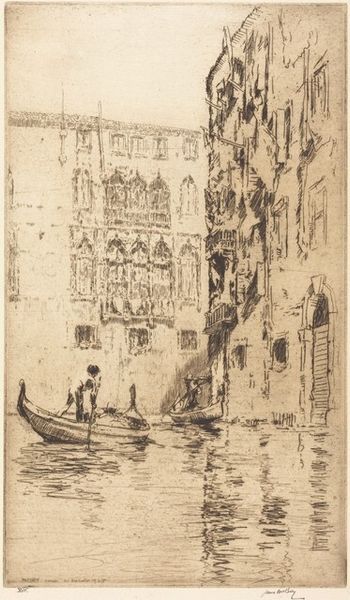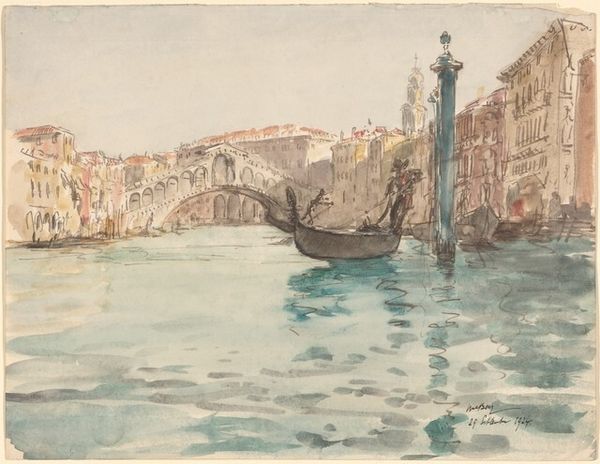
Dimensions: overall (approximate): 29.2 x 46.9 cm (11 1/2 x 18 7/16 in.)
Copyright: National Gallery of Art: CC0 1.0
Curator: James McBey's 1925 watercolor drawing, titled "Passing Gondola," offers us a glimpse into a moment in Venice. What are your initial impressions? Editor: A certain intimacy, a lived-in feel. The buildings aren’t monumental, more quotidian. Clotheslines strung between windows... it’s less about grand architecture and more about the residents, their lives interwoven with the canals. Curator: Indeed, and I think McBey skillfully captures this intersection through visual symbols, such as the architecture casting long shadows upon the canal water, reflecting centuries of culture and tradition. Note also the lone gondola traversing the divide of light and shade... It all gives a sense of time suspended. Editor: The gondola feels almost like an interruption of the still image. I read this in a socio-political context—who has the privilege of movement, and who is fixed within those buildings, their lives publicly displayed on the washing line? How does class shape one's relationship to this city? Curator: An insightful interpretation! One could also argue that the gondola, a timeless symbol of Venice, becomes a stand-in for continuity. Despite the ephemeral nature of life symbolized by hanging clothes, cultural heritage endures. Editor: That timelessness you mention can also be a trap. It risks romanticizing the city, erasing the labor and inequalities that keep it functioning for the privileged tourist gaze. Even the way the laundry obscures some of the windows hints at issues of visibility and voice. Curator: And yet, isn’t the mere presence of laundry also an honest depiction? Wouldn’t erasing it further sanitize Venice, creating a false symbol devoid of everyday truth? It invites us to look at what's underneath that idealized view. Editor: Perhaps that interplay, that tension between what's presented and what's deliberately not shown, is what makes the piece so compelling. It allows for multiple narratives to co-exist. Curator: Agreed. It highlights that visual culture has layers that call to our cultural memory. The piece, in its subtle ambiguity, holds space for those layered readings. Editor: Yes, a conversation about representation itself. Not just about Venice, but about the power dynamics inherent in viewing and being viewed.
Comments
No comments
Be the first to comment and join the conversation on the ultimate creative platform.
